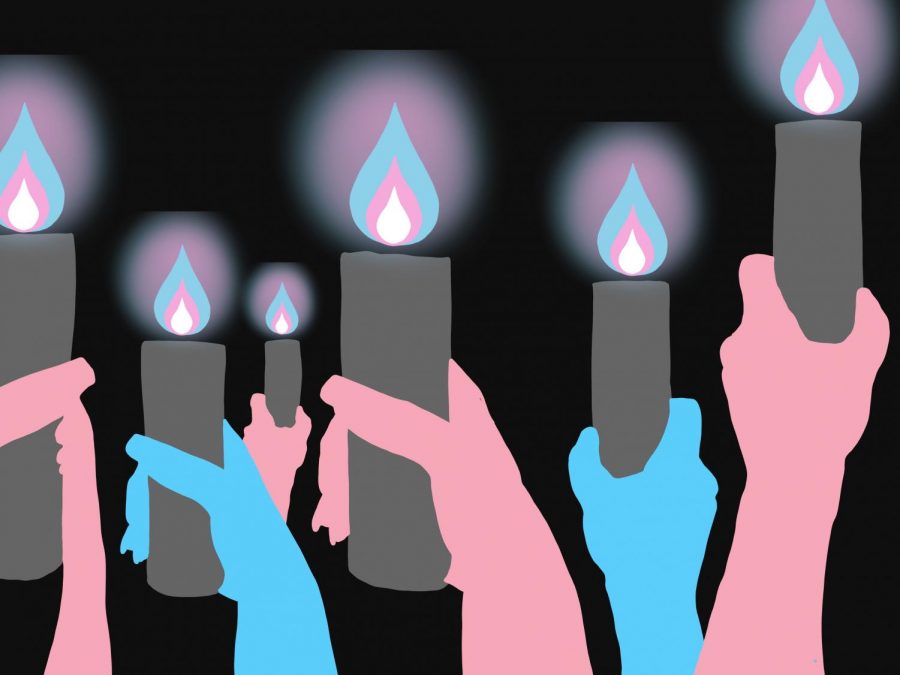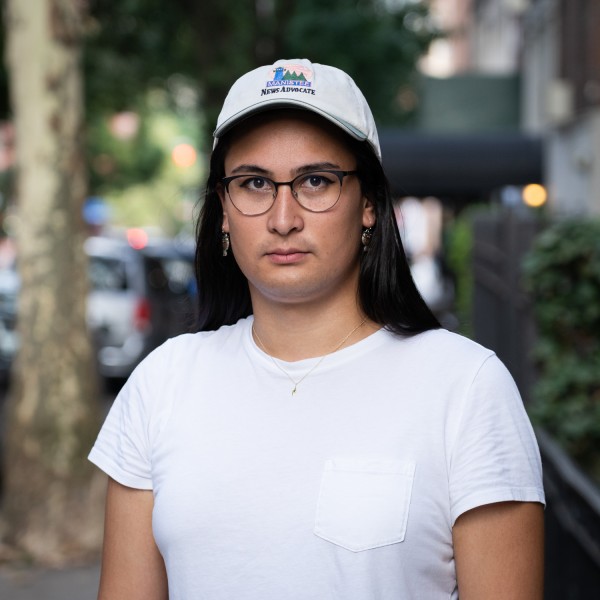Opinion: Do us justice with your trans remembrance
Transgender Day of Remembrance, commemorated on Nov. 20 each year, is a day for mourning and honoring trans people lost to a transphobic society. If you’re a trans ally, you need to carefully consider where your remembrance is coming from.
The annual Trans Day of Remembrance is a chance to memorialize those lost and to stand up for those still living. (Staff Illustration by Manasa Gudavalli)
November 20, 2021
Content warning: This article discusses transphobia, murder and suicide.
Founded in 1999 by Gwendolyn Ann Smith in memory of Rita Hester, a Black trans woman murdered the previous year, Transgender Day of Remembrance memorializes trans people who have died to a prevailingly transphobic society. Yet these days, mainstream, cisgender gestures of remembrance often evoke an obsession with trans death. There are plenty of people who cheer when trans people die, but there are also those who seem suspiciously eager to make a hashtag trend, or post on their Instagram story in “remembrance.” Remembrance, though, should be a last act of love — not a status of perpetual martyrdom.
“It’s always important for us to elevate the most authentic version of their stories as possible,” said trans activist and writer Raquel Willis. “That means talking to people that care about them and love them, and also figuring out how to support those left behind.”
With 46 recorded murders of trans people so far, 2021 has been the deadliest year on record for transphobic violence, which overwhelmingly targets transfeminine people, Black and Latina trans women in particular. On Nov. 4 — while this article was being written — Marquiisha Lawrence, 28, was killed in Greenville, South Carolina. Layleen Polanco, a Black Latina trans woman, died in 2019 from a seizure while in solitary confinement at Rikers Island.
Mayor Bill de Blasio had planned to impose limits on solitary confinement, citing (among other reasons) Polanco’s death, but earlier this month his administration delayed plans to put those limits in place. Mayor-Elect Eric Adams, for his part, supports solitary confinement, an especially troubling aspect of his dangerous pro-prison record.
Meanwhile, de Blasio and Gov. Kathy Hochul plan to ship transgender inmates at Rikers to upstate prisons, separating them even further from their families and communities despite the fact that 85% of Rikers inmates have not even been convicted of a crime.
This is to say nothing of the increasing popularity of anti-trans legislation like “bathroom bills”, restrictions on sports participation and impeded access to gender-affirming healthcare that would threaten the safety and civil liberties of trans people, particularly trans youth, across the country. Anti-trans sentiment is not localized to the United States, either, as the U.K.-led Anglosphere trend of so-called trans-exclusionary radical feminism continues to make inroads in ostensibly liberal spaces.
However, Willis said that recent anti-trans rhetoric is not new — only the specifics of its messaging and the media through which it spreads. “We’ve always been here, and that is heartening,” she said — as much as they’ve tried, they’ve never succeeded in erasing us.
As transphobia continues to evolve, though, so must allyship. Willis said that cis people must be innovative in the ways that they support trans people. The most popular method of allyship these days is promoting the proper use of trans people’s pronouns. This is, of course, necessary, even at a university generally as welcoming to trans students as NYU.
Among my more memorable misgenderings at NYU took place in a 100-member Zoom class — twice — courtesy of my first journalism professor at NYU. Both times, I corrected him, he apologized, and a TA contacted me apologizing on his behalf. After the second time, he avoided referring to me with any pronouns at all.
Earlier this semester, another journalism professor misgendered me in class, calling me a “Mr.” When I spoke to her afterward, she apologized with genuine contrition for not even noticing her mistake. “I could cry just thinking about it,” she said, but a couple weeks later she misgendered me again. I didn’t talk to her about it that time, and I don’t think she ever noticed.
I still have only been gendered correctly by one NYU professor, and never by any of the professors who are educating the aspiring journalists who will help shape public discourse. These days, I wince internally whenever I see someone preparing to refer to me in the third person.
Demeaning as they are, though, these little humiliations are mere drops in the contemporary deluge of transphobia. Pronouns are a start, but merely wearing a little pin and changing your Zoom name do not make you an ally.
“They need to go beyond all of this pronoun talk and actually talk about the structural shifts that need to happen,” Willis said. “How are you financially and educationally and skill-wise investing in trans people?”
Pronouns, after all, are typically used when the trans person in question isn’t in the room. The same could be said, in a way, about remembrance. In both cases, we’re asking you now to remember us while we’re still here.
Trans death has, for some, become a punchline of sorts. There is a figure that many trans people are all too familiar with by now, wielded alternately as a taunt by those who wish us dead, and by misguided allies as proof of how much saving we need: 41%, the percentage of trans people who have reported attempting suicide.
I’m fortunate to be part of that other 59%, and don’t foresee that changing. I’m lucky to have support from my friends and, begrudgingly, from my parents. Relatively few trans people have that degree of encouragement.
One trans friend of mine says she’s emboldened to stay alive out of spite toward the people who want her dead, while another said she’s been tempted to take her own life to show her parents what they could have prevented.
The numbers on trans suicide, despite my own stability, are far too close to a coin flip. At times, to be transgender feels like watching that coin turn over itself in the air, watching its arc in slow motion, never quite sure which side it will land on. At times, to be transgender means to genuinely despair.
To be clear: Being transgender also brings transcendent joy and unique beauty and precious love that no cisgender person could ever grasp. But on some days, it all seems lost against the backdrop of a world that seems at times outright malicious and at others merely uncaring.
While it’s relatively easy to convince the public that trans people deserve to live, it’s a little harder to convince people to help us thrive. But we deserve dignity, not just survival.
While solutions are never simple, there’s a clear place to start. “The call to action continues to be: How do we move resources and support to Black and brown trans leadership?” Willis said.
You can begin by following and supporting trans people and trans-led organizations working to make the world a better place for trans people. Show up for us today, and then don’t stop showing up for us. Put more energy into remembering us in life than congratulating yourself for mourning us properly.
Vigils and rallies will be held in Washington Square Park today starting at 4 p.m., and Bridges4Life is hosting a ceremony at Judson Memorial Church at 55 Washington Square S. from 5 to 9 p.m.
Today, remember the trans people who are no longer with us. Then remember the ones who are.
Contact Alex Tey at [email protected].

























































































































































